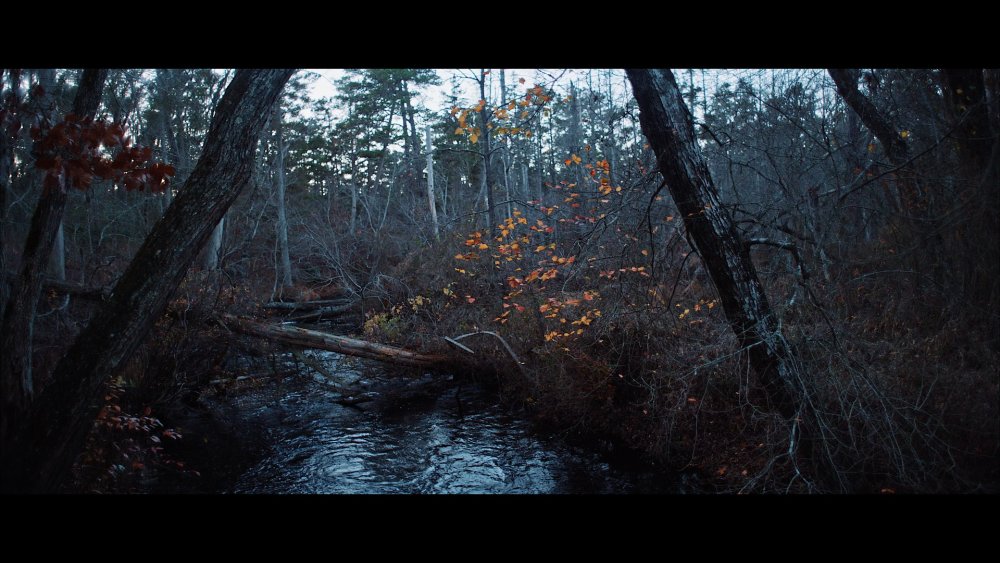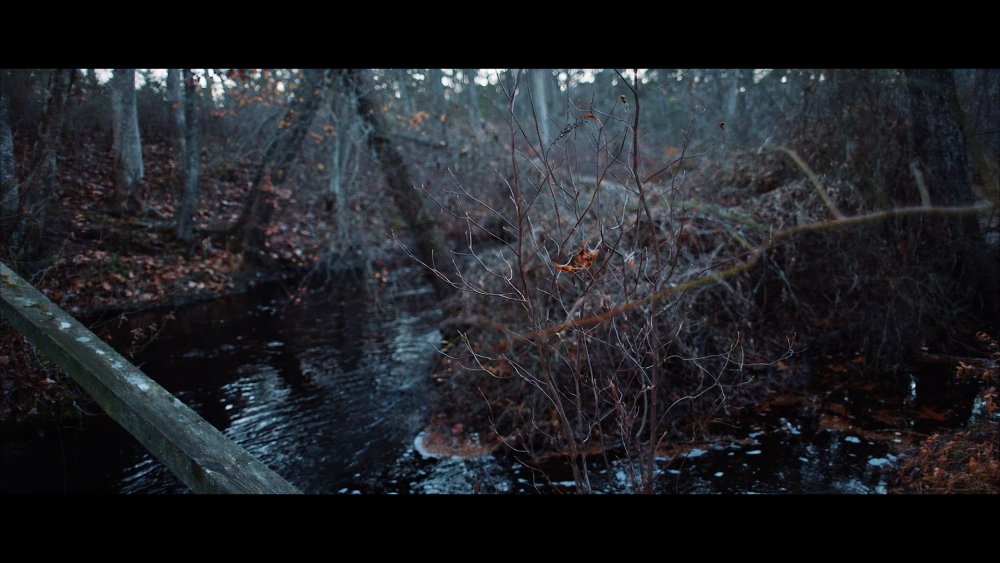Leaderboard
Popular Content
Showing content with the highest reputation on 05/03/2023 in all areas
-

A6700?
Marcio Kabke Pinheiro and 3 others reacted to kye for a topic
The number of stops in IBIS is irrelevant - except for marketing purposes. The difference between a great IBIS and meh IBIS systems isn't the number of stops, it's things like the travel of the system (how large the movement can be before it runs out of travel to compensate), how fast it can react (high-frequency performance), motor strength, etc. When you see an IBIS system failing to compensate for camera movement it will be limitations of these aspects. The GH5 has similar number of stops as many other cameras at the time with inferior overall performance, it was some combination of other factors that made the difference between them.4 points -
Try a used Fuji XS10 with the 18-55mm f2.8/42 points
-
DR.. sure. A camera can have as many stops of DR as you like - unless you're delivering in HDR then you just have the problem of what to do with all those stops in post. If you spread them all out evenly then you end up with footage that looks like it hasn't been converted from log to 709. Where do you think the "flat look" trend amongst YouTubers came from? Think about it - professional outputs don't lack contrast and saturation, just the YouTubers. The flat look is when the DR of your camera exceeds your ability to colour grade the footage. In many ways then, more DR is actually hurting you rather than helping. Don't believe the specs - better specs are only "better" when you don't actually make films.2 points
-
As they cram more features and chips inside similar ultra compact bodies designed to support 8-bit FHD originally, we are going to get more and more overheating problems on the video side. Of course this is where Sony will upsell you an FX30 with FF body and active cooling.2 points
-
The unique SOOC look comes from both the different sensor technology and those film simulations. If you just import the raw files into lightroom and using adobe color science, the color is just kinda decent. Then, you change the color profile to those film simulations and the difference is night and day. It's almost a magical moment. That's why I buy a fuji camera for stills (mostly for causal use though). For video, eterna is a decent starting point, if you don't plan on shooting Log. The XT5 and X2Hs are great cameras with a lot of features, but it really comes down to if you need those high end features. Personally I choose my fuji camera based on look and erogomics, since the color sciene is terrific regardless of the model. That's why I sold my XT4 and got a XE4 instead. The only feature I ever miss is the IBIS.2 points
-
Will share once I done the edit Just use HDR-PQ which will have more DR than cinestyle profile, like this guy shot in HDR to get the most of DR.1 point
-
To add to what Django has said, there is a fair amount of comment about the X-T5 video capabilities versus the competition and other Fuji cameras in the dpreview review - https://www.dpreview.com/reviews/fujifilm-x-t5-in-depth-review Also, you should listen carefully to Jordan Drake's comments on video rolling shutter, crop factors and SD card stability (for video) in the video review (skip to 6:19 for the video section) - https://youtu.be/y0YSjBiKb0A?t=3791 point
-
The XT5 uses the 40MP XH2 sensor. So yeah very different sensor to the XT4. But they have reduced the size of the XT5 so that it matches the XT1. This results in some crippling for the video side due to heat management. 6.2K & 4K60p max. And it overheats pretty quickly, much more than the XT4. For this alone, I wouldn't go near it unfortunately as I do like the retro dials and form factor. But for casual use it may not be so bad. The AF is I've heard slightly better than XT4. The sensor is nowhere near the performance of the stacked sensor inside XH2S.1 point
-

Color - But Specifically, Fuji
aaa123jc reacted to hyalinejim for a topic
This is true for all makes of cameras. Adobe Color / Standard / Neutral levels the playing field. These profiles are supposed to be close to natural colour, from what I can tell. The Camera Matching profiles are Adobe's emulations of the manufacturer's own profiles and are always worth checking out as they may be much nicer than the default. And sometimes using the manufacturer's own raw converter will give slightly nicer colour (but without most of the convenience of Adobe workflow).1 point -

Share our work
kye reacted to QuickHitRecord for a topic
Much appreciated, Kye. I had fun with this. I do my share of corporate talking heads but THIS is what I like to do. I even added a line to my website about offering a special rate for conservation and climate-related projects.1 point -

Share our work
PannySVHS reacted to QuickHitRecord for a topic
One of my favorite projects from 2022 (I just wish they used a better thumbnail):1 point -
Flog2 has an identical gamma curve to Arri Clog3, and the colour space is rec2020. So yeah it probably is one of the best log profiles around. Especially considering the support, and knowledge for Arri footage in the cinema & high end commercial space.1 point
-
There are a few things that would benefit you to understand. Firstly, no camera on the market these days is "accurate" - they all apply a strong look to the image. Those that apply a colour profile (either 709 or log) apply a significant number of colour tweaks to the image, and those that shoot RAW get similar tweaks in post when converted to 709 by a colour space transform or a LUT etc. Secondly, all the looks from all the manufacturers share a number of common traits. I've compared quite a lot of different cameras over the years and shared the results here, so go digging if you're curious. These traits are essentially things that the human eye finds desirable, and they began with film (which was in development for decades and decades with the all the worlds best image scientists all working on it) and then when digital gradually took over this processing continued in development. If you don't agree with this, or aren't aware of it, find footage of a colour checker from as many camera brands as you can and just look at the curve applied to the greyscale and look at a vector scope of where the hues are falling - they're not falling where they should if the image was even remotely "correct". Thirdly, non-camera nerds see the world very differently to us, and it's not like we all agree on everything. I suggest you find one of these people that prefers Fuji and load some images into Resolve and start adjusting things and see which things they don't care about and which things makes them hate the image when you change them by only a tiny amount. This is how you can find out, in broad terms, what it is that they like and are sensitive to about Fuji in-particular.1 point
-
The Fuji film simulations combined with X-Trans sensor is what gives Fuji its singular SOOC filmic look. There is one often overlooked tradeoff which is chroma noise smoothing that can give mushy colours especially in Flog. You probably won't even notice it though if you're not shooting log. Then there is the sharpness that some perceive as too intense even at the minimal setting. But YMMV, some people like it. The main gripe many people have about Fuji for video is their lenses aren't really suited for manual focusing and up until XH2S the AF was rather dodgy. It is much improved and seems sticky on XH2S but still some quirks persist. Perks aside, XH2S still has one of the best sensors around with 14-bit readout, 6K and open-gate. And very chunky ProRes files. But if you don't need such high-end specs/performance and don't even shoot log or grade then I don't really see much point investing in such a cam. Might as well shoot on any older cheaper 8-bit model..1 point
-
I've been running some tests over the past 6 months or so with different cameras and lenses trying to simplify my entire workflow and gear. Over the years, in search of the perfect camera/lens(es) combo(s) I've become a slave to the gear that collects dust in my closet. Anyway, I feel like I know which direction best suits me, but I figured I'd share some of my results. Here are a couple frames from the Sigma FP and Nikkor 24mm f/2 ai-s lens. I've never really been a huge fan of wide angle lenses but there is a good reason to have one in my kit. On other cameras, I have found the Nikon lens to be lacking and it's flaws show, but I could always recognize that there is something funky and great about the lens, especially wide open. It wasn't until I shot it with the FP that I saw its true potential... My color work probably needs some tweaks, as they look a little too contrasty for my normal tastes.1 point
-
I would recommend not changing lenses at a concert. Firstly you'll lose time finding enough space to change them, or balance the lenses in your arms and risk dropping everything. But most importantly, concerts get hot and you will 100% get condensation on the sensor, meaning you'll be unable to shoot anything for a minute or so each time. Better to have two bodies with a nice combination of primes (say the 21 and the 50) But I would personally stick to the zoom on cam A with a super wide prime for cam B.1 point
-

Color - But Specifically, Fuji
solovetski reacted to kye for a topic
I think there are three things going on. 1) People can't colour grade and they're trying to buy their way out of learning. As Resolve has grown in popularity the number of people that got access to a colour-managed workflow or colour space transformations has grown, and the number of people that can get the look they want from whatever camera they are using has also increased. 2) People don't remember what film looks like. The number of "filmic" images that look nothing like film has gradually turned from a trickle to a vast deluge, to the point now that many people trying to get the look of film may have never seen it, or wouldn't recognise it even if it showed up with the film-strip not yet cropped out. Over the last year or so I've been rewatching older movies and TV shows shot on film, from back when this was how all TV and movies were shot, and at times I've watched several hours of film a day for weeks or months straight. Most so-called "filmic" content online looks nothing like film, in practically any way. It does, however, remind me a lot of 4K GoPro footage, but with 15 times the dynamic range of both a GoPro and most film processes. 3) People have changed what they like. As time goes on, "cinematic" looks more and more like video every day. The so-called "cinematic" videos that people like, speak fondly of, share, and aspire to, all look nothing like what cinema actually looks like. I lost count of the number of times I argued online about sharpness and resolution and depth of field and colour science and colour grading and began to question myself in the face of almost universal online opposition.... then I'd go see a movie and I'd be reminded that I was right and everyone else was blind, has stopped going to the cinema, is full of shit, or all of the above.1 point -
Panasonic S5 II (What does Panasonic have up their sleeve?)
solovetski reacted to ac6000cw for a topic
Yes, I very well know that - it's the main reason I use micro-4/3 cameras and long telephoto lenses for wildlife video and stills. Full-frame lenses of equivalent 'reach' are far to large and heavy for me to want to carry around, so I accept some picture quality compromises instead e.g. low-light performance. If you want to keep the lenses small, then use 'cropped' sensors e.g. APS-C or micro-4/3 (or maybe use 'APS-C' lenses on full-frame sensor cameras - I think Sony and Panasonic support that at least, maybe Canon and Nikon too). You just have to decide which set of compromises you can live with... I agree. Whenever I look back at video I shot in the past on VHS-C, DV and HDV tape, plus a variety of small-sensor cameras (like HX9V and FZ100), and compare it to 1080p let alone 4k from my Pana G9, I'm reminded how much video consumer/prosumer quality has dramatically improved over time...(as have camera stabilisation and the displays we view it on).1 point -
Z9 was announced during COVID and had a 9 month shipping delay due to global parts shortage which led to continuous backorders. This is no longer the case so the same scenario shouldn't repeat itself. Z8's should also be produced on a larger scale as it is less of a high-end niche camera than Z9. flip out displays on mirrorless bring tons of issues including failure points and side port blocking and for me zero advantages as I never use the selfie position. Unfortunately most video oriented mirrorless have all switched to them so its nice one company has resisted. The Z9 probably has the most versatile tilt hinge display mechanism too, hopefully included on Z8.1 point
-

Dedicated Camcorder vs Mirrorless?
Rivhop reacted to fuzzynormal for a topic
I like smaller sensor cameras for the super-zoom capability they typically offer. Also camcorders with built-in ND filers are nice.1 point -
Oh, and thanks to my friend Glenn @mercer for "making me" get this lens. This lens has given so much joy like no other one has before. And images to see and to film! Thank you, my friend for this and for so much more. See you in the next Eoshd filming rally! best, Marty1 point






